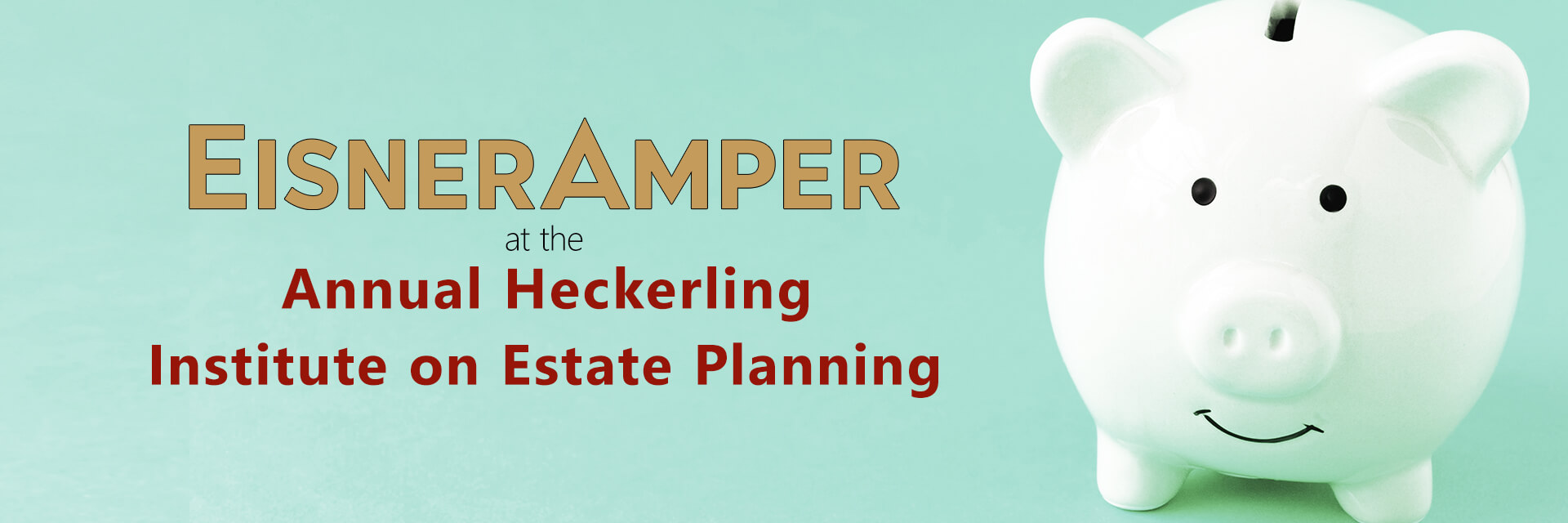
Qualified Small Business Stock: The Next Big Bang
- Published
- Jan 16, 2019
- Topics
- Share
A frequent and common request from clients is to pay less income tax and while that is always our goal as tax professionals and advocates for our clients, it is often difficult to move the ball much due to the constraints of the tax code. Paul S. Lee of Northern Trust provided insight on the potential to utilize Qualified Small Business Stock (“QSBS”) to achieve significant tax savings. QSBS tax benefits have matured over the 25 years since enactment to go from offering minimal tax savings to now offering a 100% tax exclusion for stock acquired after September 27, 2009. Lee stated this particular code section has gone from “a lot of potential” to “superhero status.”
The basic requirements for QSBS are:
- Stock in a C corporation
- Acquired by the taxpayer at its original issuance (gift, inheritance and transfer by partnership allowed)
- At all times before issuance of stock, “Aggregate Gross Assets” do not exceed $50 million
- During substantially all of the taxpayer’s holding period, the corporation meets the active business requirement (many service businesses excluded from qualifying as QSBS)
- Exclusion available to individuals, trusts and estates shareholders. The exclusion can potentially pass-through from partnerships, S corporations, regulated investment companies (RICs) and common trust funds.
In order to be eligible for the 100% exclusion, the stock must have been held for five years (acquired after September 27, 2009) and the transaction must be a sale of stock and not assets. The excluded gain for each taxpayer is limited to the greater of $10 million or ten times your “basis” in the stock. Basis for this purpose would include the fair market value of contributed property; a step-up in basis does not get included.
Some interesting takeaways from the session:
- In order to avoid ordinary income tax rates when a partnership has a significant amount of assets depreciated under IRC Section 168(k), the partnership should convert to a QSBS and then the eventual asset sale will be taxed at a 21% federal rate. The subsequent liquidation would be treated as a QSBS sale and be tax-free, thus effectively lowering the tax rate from as high as 40% as a pass-through to 21% on a corporate asset sale. The converted corporation must be held for five years and meet the other QSBS requirements.
- QSBS stock held for six months can be rolled over within 60 days under IRC Sec. 1045 to another QSBS to defer gains not eligible for the exclusion. Holding period of new QSBS is tacked from the holding period of original shares.
- QSBS treatment is not elective so for stock acquired prior to September 27, 2009 it may be beneficial to not follow one of the requirements of QSBS prior to a sale to avoid QSBS treatment.
- Use gifting and other methods to multiply the per-issue gain limitation.
- Most states follow federal treatment of QSBS, with the exception of California and Pennsylvania.
To read more Heckerling content, please see below:
- TCJA is the Gift That Keeps on Giving for Wealth Planning – at Least Until 2026
- Basis After the 2017 Tax Act—Important Before; Crucial Now
- Qualified Small Business Stock: The Next Big Bang
- Getting the 411 on IRC 199A: Just the Facts, Ma’am
- Recent Developments 2018
- Make Your Charitable Estate Plan Great Again
- Having Your Cake and Eating It Too
- Structuring the Tax Consequences of Marriage and Divorce After the Tax Cuts and Jobs Act (TCIA)
Contact EisnerAmper
If you have any questions, we'd like to hear from you.
Receive the latest business insights, analysis, and perspectives from EisnerAmper professionals.











